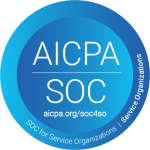Case Study
Military Unit Supporting Emergency Management
Enhancing Readiness, Preparedness and Response to Emergencies
Key Highlights
Enhanced the unit's readiness to perform their role in building national resilience, preparedness, and response to emergencies
Optimized resource allocation for diverse emergency scenarios
Improved training and simulation exercises to address readiness gaps
Rapid technological integration via a multi-platform micro-services approach
Background
Challenge
The unit faced several challenges in maintaining optimal preparedness:
- Resource Allocation: Allocating sufficient resources, including personnel, equipment, and funding, to adequately prepare for various types of emergencies.
- Training and Exercises: Training personnel and conducting exercises to simulate emergency scenarios were essential for preparedness. Ensuring these trainings addressed relevant readiness gaps was a significant challenge.
- Interagency Coordination: Effective response to emergencies required close coordination between multiple agencies, including the military, emergency services, government ministries, and local authorities.
- Technological Integration: Rapid advancements in technology presented both opportunities and challenges for operational planning.
4Cast Solution
Assessment
4Cast developed readiness model, integrating operational mission needs with training, personnel, and equipment. The model was implemented in 4Cast platform and was subjected to different scenarios to identify gaps. The platform provided recommendations for decision-makers, ensuring efficient allocation of resources.
Training
4Cast enabled training based on the readiness gaps of units and individuals. Real-life scenarios were simulated using VR technology and 3-dimensional surroundings displays, ensuring that training exercises were relevant and effective. Competence metrics were updated in real-time, allowing for continuous assessment and improvement.
Debrief
Post-training, 4Cast facilitated comprehensive debriefs of all agencies with an emphasis on decision-making processes. This included receiving real-time recommendations and insights, enhancing the overall readiness and performance of the unit.
Results and Impact
- 4Cast’s readiness model allowed for the efficient allocation of personnel, equipment, and funding, identifying gaps and providing actionable recommendations for decision-makers.
- Training exercises addressed specific readiness gaps of units and individuals, using real-life scenario simulations and enhancing the readiness models for After Action Reviews (AAR).
- 4Cast developed a multi-agency model that facilitated synchronized war-gaming and training scenarios. This approach created readiness according to task force per mission, scoring the “task force impact on a mission” and ensuring effective collaboration between military, emergency services, government ministries, and local authorities.
- The multi-platform micro-services approach enabled fast integration of new technologies, enhancing HFC’s operational capabilities.

